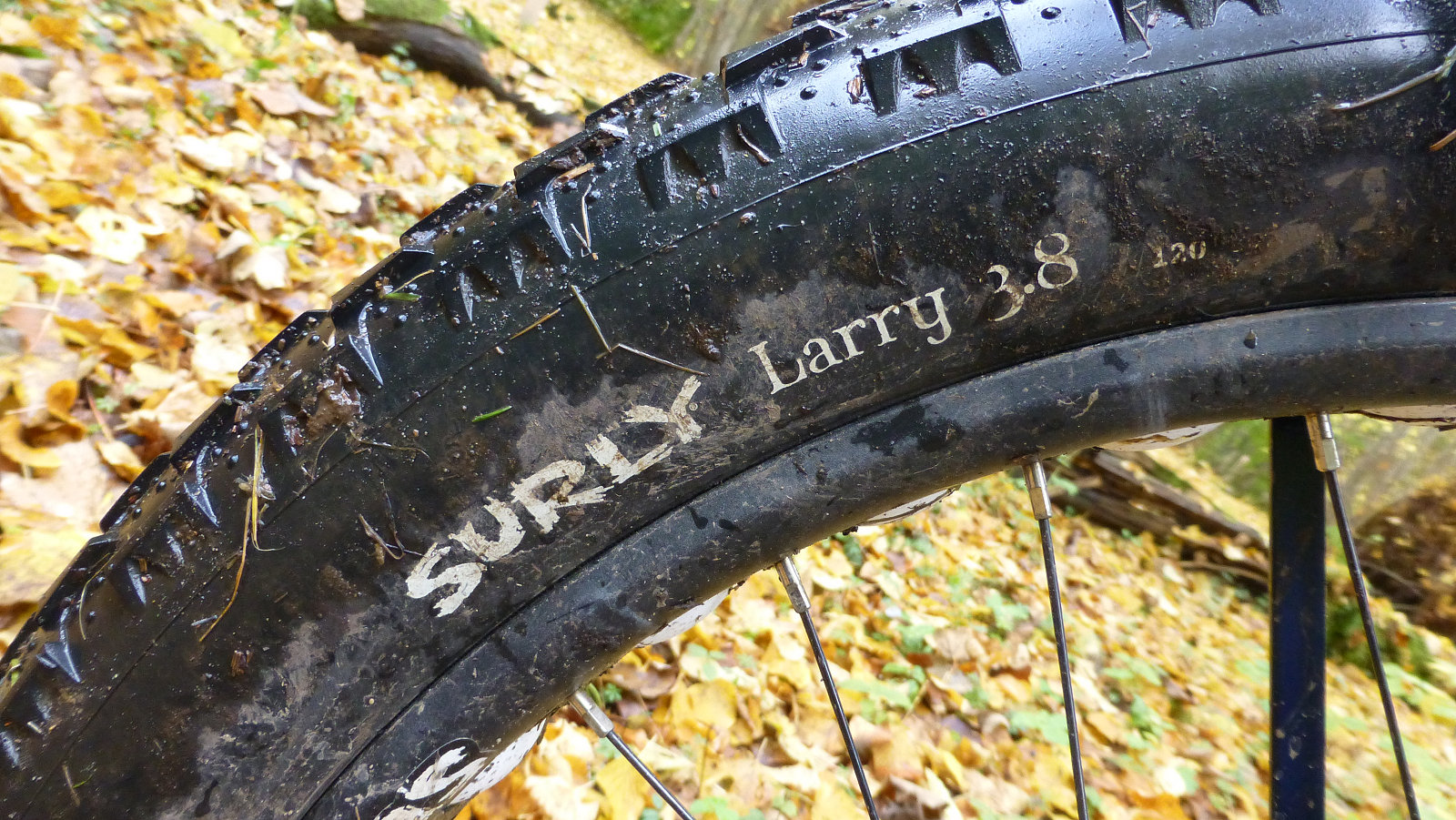When out riding a fat bike it is often the fat tyres that attract all the attention and comments. Usually about how heavy they look, how hard it must be to pedal and so on, occasionally just how stupid they are, the latter mostly from Lycra-clad road cyclists, you know, the snobbish one’s who ignore your greetings. So, on this page I’m going to share a few words about fat bike tyres, based on 10 years of riding a fat bike on a wide range of different terrains, and often challenging, weather conditions.
Firstly, fat big tyres are big and obviously heavier than your usual bicycle tyres. My favoured all-year-round tyre is the Surly Larry 3.8″ 120 tpi and it weighs in at around 1250 grams, give or take. Compare that to the average mountain bike tyre which is about half that, with a road bike half that again. They are heavy, but weight really isn’t an issue. Fat bikes, to my mind, are for exploring everywhere, and I mean everywhere. They are not for riding fast, although you can if you want too. These big tyres allow you go cope with just about any surface condition, snow, sand, mud, gravel, grass, peat bog, rocks, you name it, even tarmac.
Perhaps an example of a typical day’s ride would be in order. I’ll use one of the most well-known routes here in Scotland, perhaps in the UK, or possibly even the entire world. That route is from North Berwick in East Lothian to the Mecca of fat bike riders, the midget submarine wrecks out in Aberlady Bay. This route made famous by Bruce Mathieson, a.k.a. Coast Kid and his annual Fat Forth fat bike gatherings. before we start, our tyre pressures are 8 psi on the front and 10 psi on the rear and I’m using Marge Lite 65 mm wide rims, not the widest available but good for all-round use.
Our voyage begins at North Berwick, where we quickly drop down onto the beach and head West. Here, the sand is usually well compacted and easy to ride but after a short while you’ll encounter some rocks which you just ride over. After that a mix of sand and pebbles, again your fat tyres will cope just fine. Next, as you approach Whitecraigs, you’ll probably cut the corner of the beach and this is where you will encounter very soft sand, your tyres will sink in, your legs will complain, you’ll click into low gear but will be able to continue even with your tyres sinking into the soft wet sand.
Now, let us continue on our way. As you approach Marina Villa you will come across a cobble beach, a mix of loose smooth grey cobbles ranging in size from golf balls up to water melon size. You might not think so but you can ride all the way across here, just keep up the momentum and turn those pedals. Yes, those big fat tyres doing their thing again. After leaving Marina Villa, we drop down onto the rocks proper, a wicked mix of eroded limestone, loose pebbles, seaweed and assorted boulders. You can clean this section thought personally I’ve never managed it but friend Coastkid and many others have, so give it a try, you may be lucky.
As we reach Eyebroughy island, the tide is in and we now follow paths through the marram grass, where loose dry wind-blown sand lies deep on the trail. Here again our big fat low-pressure tyres keep us flying along where bikes with lesser tyres come to a stop. Some of the steeper sections are tricky but pump those leg muscles and you will succeed.
More of the same until Aberlady Bay, where we venture out onto the sand flats, heading for the two midget submarine wrecks out in the bay. Now are fat tyres are coping with various sand conditions. Much will be well-compacted while some with be like quicksand and bring you to a dead stop. You will also encounter teeth-chattering corrugated sand ripples, sand berms, deep pools of standing water and with a fierce head wind thrown in for good measure. Yet you still are able to pedal onwards until finally you stop to inspect the wrecks. You have reached your destination. a good test to show what fat bike tyres are really capable off.
Copyright ©2020 Gary Buckham. All rights reserved.


